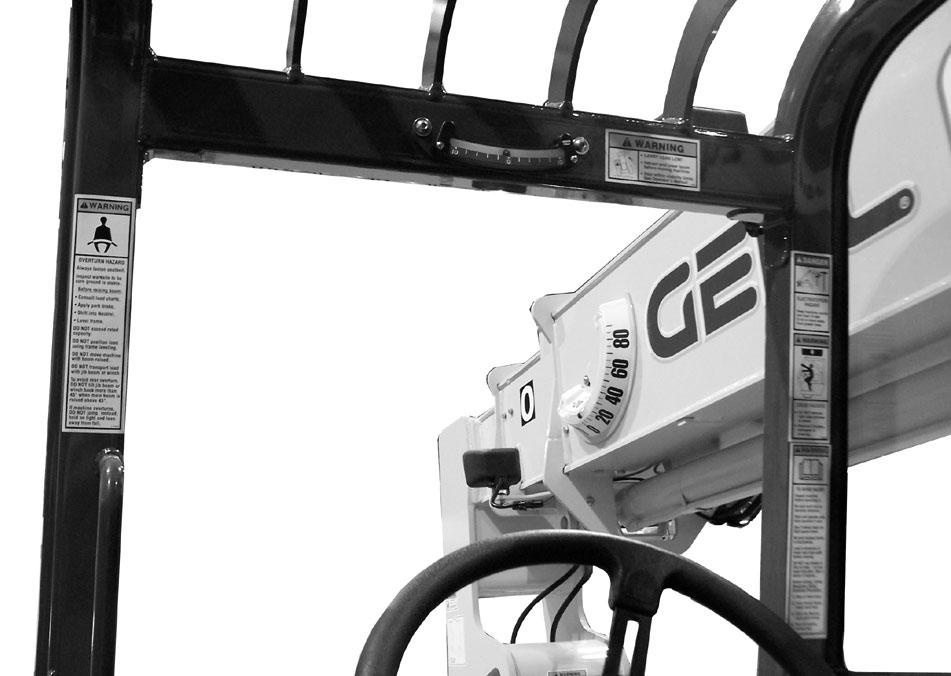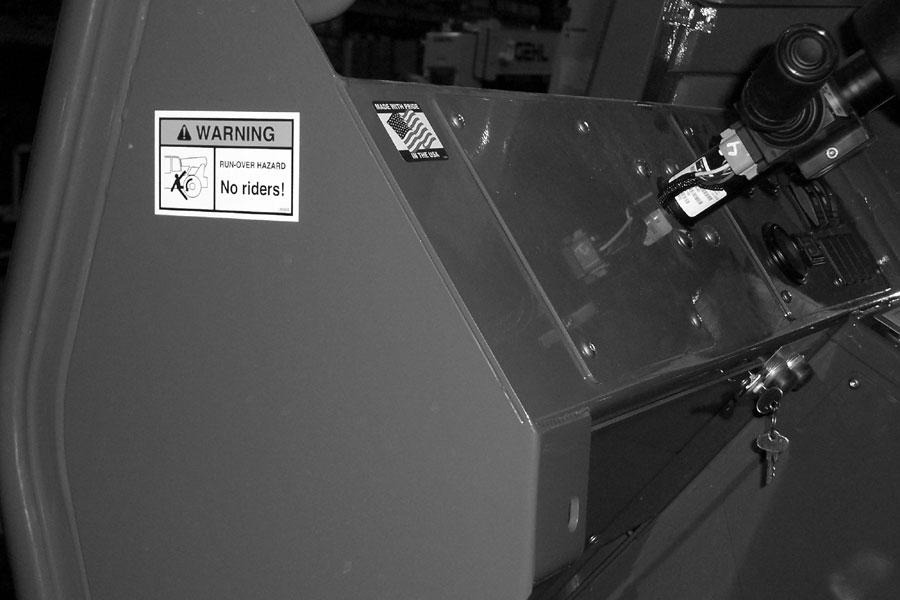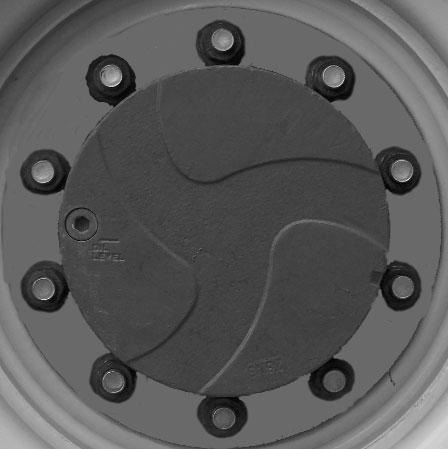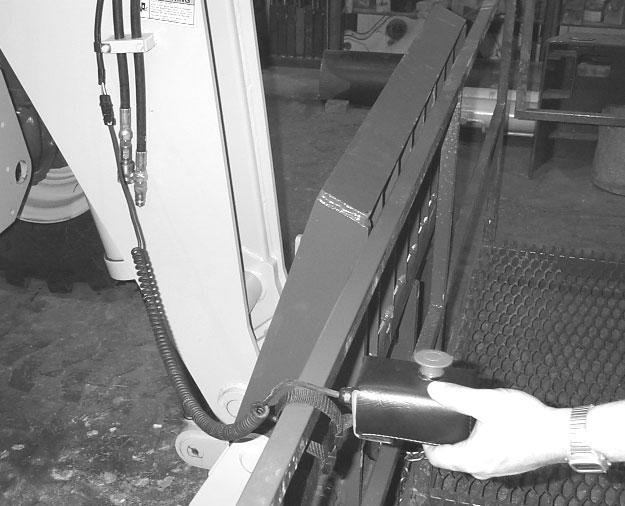
5 minute read
SAFETY
ALWAYS be sure all nameplates, warnings and instruction markings are in place and legible. Local government regulations may require specific decals, which then become the responsibility of the owner or user to provide.
Safety Guards and Warning Devices
This machine is fitted with a Roll-Over Protective Structure (ROPS) and Falling Object Protective Structure (FOPS) in accordance with industry standards. It is intended to offer protection to the operator from falling objects, and in case of an overturn, but it cannot protect against every possible hazard. Therefore it should not be considered a substitute for good judgment and safe practices in operating the machine. If the ROPS / FOPS structure is damaged, it must be replaced to restore the protection it provides.
This machine is equipped with a horn and backup alarm. The user must determine if operating conditions require the machine to be equipped with additional devices (mirrors, rotating beacon, etc.) and be responsible for providing and maintaining such devices.
Personnel Work Platform (PWP) System
Warning
The machine must not be used to lift or carry personnel, or be fitted with any form of personnel work platform unless fitted with the optional PWPSystem.
If fitted with the PWPSystem, the Mandatory Work Platform Safety Rules must be followed at all times while lifting personnel.
The Mandatory Work Platform Safety Rules must be adhered to at all times while elevating personnel. These rules are based on ANSI/ITSDF Standard
B56.6-2005, “Safety Standard for Rough Terrain Forklift Trucks.” (Acopy of this and related standards can be obtained from the Industrial Truck Standards
Development Foundation, 1750 K Street NW, Suite 460, Washington DC 20009; or downloaded from: www.itsdf.com.) The rules apply to the owner, operator and the personnel in the work platform.
Mandatory Work Platform Safety Rules
1.The work platform must comply with ANSI/ITSDF B56.6-2005, Sec. 8.24, “Platforms for Elevating Personnel.” (See page 14, “Work Platform Design Requirements.”)
2.The platform must be securely attached to the carriage or forks, and the carriage securely attached to the boom.
3.The carriage and forks must be secured to prevent them from pivoting upward.
4.If the machine is equipped with a rotating or swinging carriage, the rotation or swing must be deactivated. (This occurs automatically when the “PWPSystem” is switched on.)
5.Personnel on the platform must be provided protection from any moving parts on the forklift that may present a hazard.
6.If overhead hazards exist for platform personnel, overhead protection must be provided.
7.Be sure that the lifting mechanism is operating smoothly throughout its entire range, both empty and loaded, and that any lift-limiting devices and latches are functional.
8.Be sure that the frame is level, to ensure a vertical lift.
9.Be sure the platform is horizontal before lifting.
10.Be sure that the forklift has a firm footing.
11.Be sure that any required restraining means (railings, chains, harnesses, etc.) are in place and properly used.
12.Before lifting personnel, shift the transmission into Neutral, apply the parking brake, and activate the "PWPSystem" mode switch.
13.Before lifting personnel, the area should be marked to warn others of work by elevated personnel.
14.Be sure the path of platform travel is clear of hazards, such as scaffolds, electrical wires and overhead obstructions.
15.The operator must keep hands and feet clear of controls that are not in use.
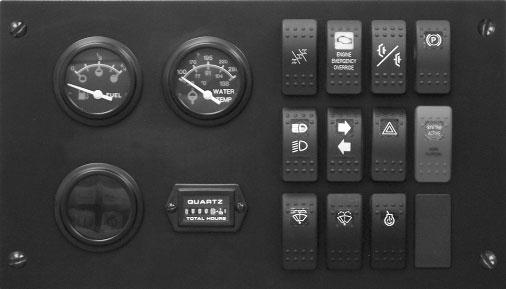
16.Personnel must be lifted and lowered smoothly and cautiously, and only at their request.
17.The platform must be lowered fully before moving the forklift. Do not drive the forklift with personnel on the platform.
18.Elevated personnel must always be alerted before raising or lowering the platform.
19.Atrained operator must be in position to operate the forklift and boom controls at all times.
20.The combined weight of the platform, personnel and load must not exceed one-third of the material-handling capacity of the forklift.
21.Platform personnel must maintain firm footing on the platform floor, unless secured by harness and lanyard. Aharness is to be worn and a lanyard attached to the platform or boom when working from an elevated work platform, in accordance with OSHAregulations. Use of railings, planks, ladders, etc. on platform for the purpose of achieving additional reach or height is prohibited.
22.Workers on the platform must keep all parts of their bodies inside the work platform during raising and lowering.
23.Be sure that the personnel and equipment on the platform do not exceed the available space.
24.The platform must be fully lowered for personnel to enter and exit. Personnel must not climb on any part of the forklift in attempting to enter and exit.
25.Any harness, body belt, lanyard, or deceleration device that has sustained permanent deformation or is otherwise damaged must be replaced.
26.Modifications to the platform that are detrimental to its safe use are prohibited.
Warning
Use ONLYan approved work platform for elevating personnel.
NEVER move the machine with the work platform in a raised position or with personnel on board.
NEVER tilt the platform forward, rearward, or to the side with personnel aboard.
ALWAYS engage the PWPSystem and follow the Mandatory Work Platform Safety Rules when elevating personnel. Work Platform System Switch
Work Platform Design Requirements (Per ANSI/ITSDF B56.6-2005, Sec. 8.24)
1.Aplatform floor having a slip-resistant surface located not more than 8 inches (200 mm) above the normal load-supporting surface of the forks.
2.Floor dimensions, which shall not exceed two times the load center distance of 24 inches (610 mm) listed on the forklift nameplate, measured parallel to the longitudinal center plane of the forklift, nor have a width greater than the overall width of the forklift [measured across the load-bearing tires] plus 10 inches (250 mm) on either side. Minimum space for each person on the platform shall not be less than 18 inches (450 mm) in either direction.
3.A4 inch (100 mm) minimum height toe plate, which may be omitted at the access opening.
4.An overhead protective device, when requested by the user.
5.Protection for personnel in their normal working position on the platform from moving parts of the forklift that may present a hazard.
6.Information prominently indicated on the platform: a.maximum work load including personnel and equipment, and b.weight of empty platform.
7.Means so that the platform can only be centered laterally on the forklift, and retained against the vertical face of the forks, carriage or lifting machanism.
8.Ameans to securely attach the platform to the lifting mechanism, and to prevent the platform from inadvertantly pivoting.
9.Restraining means such as a guardrail or a means for securing personnel such as a body harness and lanyard. Aguardrail or similar structure shall have a nominal height to the platform floor of 42 inches (1066 mm) around its upper periphery and include a midrail. It may be hinged, removable, or of chains, and used to provide an access opening, if proper positioning is easily accomplished and a secure condition is discernable. Such restraining means shall be capable of withstanding a concentrated horizontal force of 200 lbs. (890 N) applied at the point of least resistance without permanent deformation. Abody harness and lanyard is to have an attachment point provided overhead for freedom of movement, and its length is to limit free- fall to 5 feet (1500 mm) measured from the point of attachment to the operator. The complete system shall be capable of withstanding three consecutive drop tests to simulate a 250-pound (113 kg) person falling 6 feet (1800 mm) without allowing the test weight to fall free to the ground. Adeceleration device may be included.
NOTE: Fall protection should comply with applicable U.S. OSHAregulations: 1910.67 (c)(2)(v) (for General Industry) or 1926.453 (b)(2)(v) (for Construction).
10.Lanyards, when provided, shall be arranged so as not to cause a tripping hazard.
11.Body harnesses, when provided, should have a width of at least 1.75 inches (44 mm).
12.Structural safety factor-All load-supporting structural elements of the work platform shall have a structural safety factor of not less than 2-to-1 based on the minimum yield strength of the materials used.
